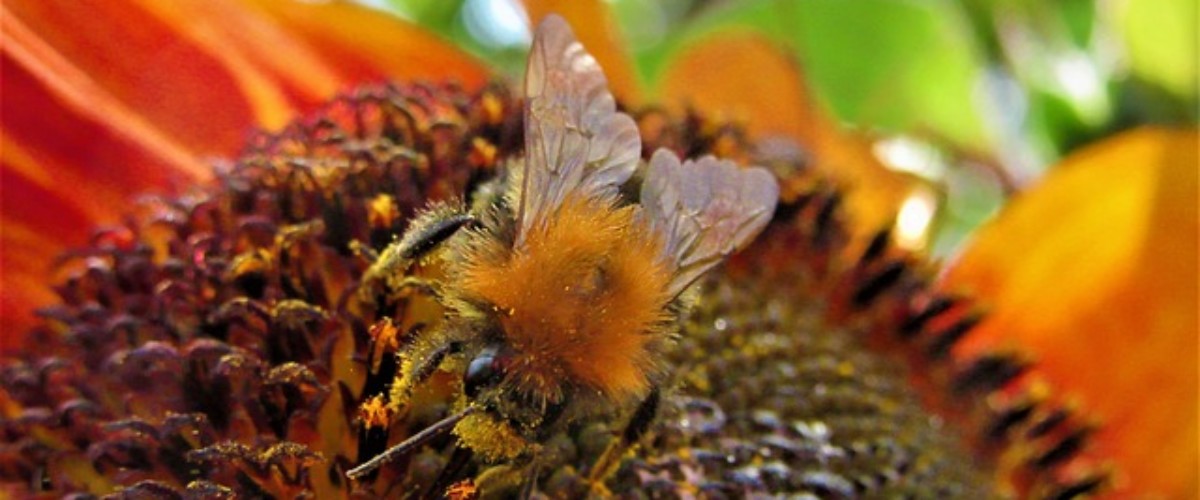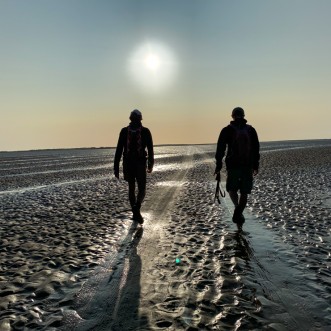Coll is a nature lover’s dream year round throughout the year with rare and elusive creatures to be found here, like basking sharks and corncrakes. Look out for harbour porpoises and bottlenose dolphins from the shore, and keep an eye out on the ferry too – in the summer it passes through waters rich with minke whales and common dolphins. There are also special rare plants and insects that alone draw many to the island to see.
Bird watching – Totronald RSPB Reserve is a rugged and remote reserve ‘teeming with some of the nation’s most special and important wildlife’ this RSPB reserve occupies a considerable part of the southwest corner of Coll. Walk across a shell-white beach backed by vibrantly coloured Coll machair, containing around 300 species of flowering plants and possibly the rare great yellow bumblebee. Coll is cited as the best place in the UK to spot the rare and elusive Corncrake on a warm spring or summer evening, there is a corncrake viewing area on the reserve. Other sights in the spring/summer include – huge numbers of lapwings, redshanks and snipe nesting in the fields and razorbills, puffins and Manx shearwaters feeding offshore. In autumn/winter there are huge numbers of wintering geese feeding in the fields, merlins and hen harriers hunting over the reserve and divers and long-tailed ducks offshore.
Getting there: by road: the car park and information room is six miles west of Arinagour, on the B8070; by bicycle: bicycle hire is available from Arinagour post office; opening times: the reserve – including the information room – is open at all times: admission is free, but donations to help. Contact: RSPB Isle of Coll nature reserve, Totronald, Isle of Coll, Argyll, PA78 6TB, Tel: 01879 230301,
Whales, dolphins, basking sharks and other marine creatures – the Basking shark is a reliable annual visitor to Coll’s shores and may be a breeding ground for them, according to research from Scottish Natural Heritage (SNH). There have been sightings off Coll not just of fully grown basking sharks, but of young sharks too and May is a great time to spot them. basking sharks have been spotted from the Hotel’s window. Arinagour is also on the Hebridean Whale Trail with plenty of sightings of Bottlenose dolphins, Common dolphins and Otters. The Minke whales travel huge distances to spend their summers in the glorious seas around Coll and are a common sight between March and October. One individual in particular, Knobble, is a popular summer resident. First seen in 2002 and recognisable by the ‘knobble’ on its dorsal fin he has been spotted in these waters nearly every year since and now even has a facebook page! Although you may see whales and dolphins on the ferry journey to Coll, you’ll definitely see the bones of one as you alight in Arinagour. A giant whale bone arch stands above the ferry terminal as you approach Coll. The impressive 3.5 metre-high arch is a replica jawbone of a fin whale, the second largest whale species in the world, that washed ashore in 2004. Orcas have been spotted seasonally from the coastal rocks and beaches, and even from the main CalMac pier in Arinagour.
There are other travellers on the Gulf Stream to see including jelly fish, turtles, sunfish and goose barnacles clinging onto the nooks and crannies of Coll’s coastline. The are also many rock pools, exposed at low tide, reveal a host of beasties and seaweed….many of which are edible if you are into foraging for your own food.
All can be spotted from the excellent isleGo sea taxi which runs whale watching tours throughout the season.
Rare flowers
The flora of Coll is a big attraction bringing for many visitors to the island, particularly the spectacular machair that borders much of the coast and beaches. There are also many Orchids and other speciality species including Pipewort and Irish Lady’s-tresses. The Spotted Rock-rose has also been found and is the only record of this plant in Scotland. A full photographic guide to the Wild Flowers of Coll and Tiree has been produced by the two island communities and is available in the Post Office with more information on Coll’s flora here
Incredible, rare insects
Have you ever heard of the short-necked oil beetle? It’s a rare flightless insect that’s only found in two UK locations; one is Devon and the other is the Isle of Coll. They were actually thought to be extinct in the UK until 2008. The beetles are named for the toxic oil secretion they produce when threatened and 150 of them were found during recent surveys on Coll. Coll, like Tiree, is also home to two more of Britain’s rarest bumblebees, the great yellow bumblebee as well as the rare moss carder bee and red-shanked carder bee. In fact these islands are the only places in britaon where all three species can be seen together.
More information on all of the species that can be spotted on Coll can be found here.


